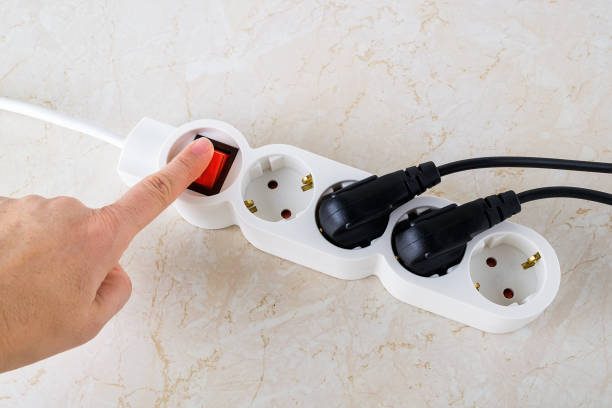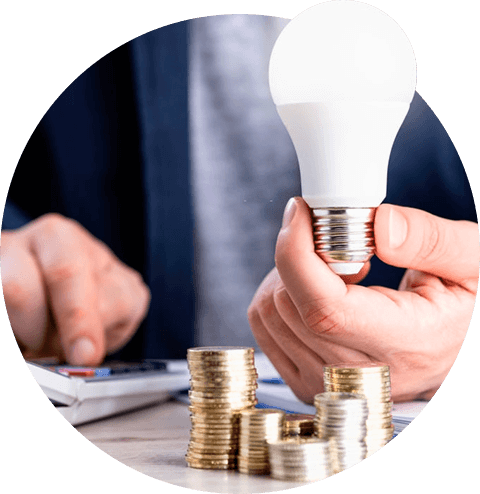
Explore common reasons why LED lights won’t turn on, from faulty wiring and incorrect installations to dead bulbs and power […]

On average, lighting consumption accounts for about 15% of the electric expenses of a typical facility. However, when discussing energy savings and implementation of energy-related cost reduction measures, most facilities focus only on the big appliances.
As a matter of fact, energy-efficient lighting measures are equally instrumental to help facilities and households greatly save on the huge electric bills.
Different options can be proposed to introduce energy-efficient lighting in a certain space.
LED Brilliance Starts Here, Just $33. Shine Brighter, Save More!
Our Team of Experts Will Guide You Through The ESS Lighting Upgrading Process To Ensure You Achieve The Most Effective Energy Efficient Improvement Possible, GUARANTEED!
A Brighter Home, A Brighter Future!
One way is to consider the type of lighting bulbs used in a home. Houses that use incandescent lighting bulbs spend more on their electric bills compared to similar households that use LED lighting.
The energy efficiency and resulting cost saving also extends to industries and commercial entities that require relatively large investments.
Another effective approach to reducing the energy from lighting and the costs spent in households is by installing timers and dimmers. With automated timers, lights can be turned off when not in use and dimmers minimize the amount of energy spent by the bulbs by reducing the light levels.
Also read; How To Choose a Dimmer Switch
Light emitting diodes are solid-state lighting technologies that use semiconductors to produce light from electric current. LED products are energy efficient lighting alternatives, with an efficiency up to 90% compared to incandescent lighting bulbs.
LED bulbs, unlike incandescent bulbs and compact fluorescent lighting (CFL), do not burn out but instead gradually lose their brightness over time when their lumen is depreciating. The advantage of this feature is an indication for you to consider replacing the bulb.
The proper moment to replace the fixture is when you notice the light brightness has depreciated by 30%. Considering their shelf life, they last 25 times longer than traditional lighting alternatives like incandescent bulbs.
LED lighting technology is available in a variety of options including typical bulb wattage like incandescent bulbs, reflector bulbs, step lights, track lights, porch lights, outdoor lighting, undercabinet lights, pathway lights, and flood lights.
The options also include a variety of colors and hues of the colors. The timer and dimming options that can be tied to LED bulbs, make them a great solution for any environment including indoors and outdoors.
LED lighting can also be solar powered providing a reliable option for people seeking sustainable approaches.
LED light bulb costs have decreased considerably since they were introduced on the market and the prices are continuously dropping as more products are introduced. However, LED light bulbs are still relatively more expensive when compared to incandescent bulbs.
While this may easily sway opinion towards incandescent bulbs, it would be a wrong choice.
Also read;
When assessing both the initial investment cost and the long-term benefits, LED lighting bulbs are the best alternative because of their long lifetime, efficiency, versatility, low energy consumption and reduced total energy cost.
However, the other noticeable detail is that LED bulbs have a longer lifespan than incandescent bulbs. While the incandescent bulb has a lifespan of about 40 days, the LED bulb can last up to a year and a half.

Disclaimer
These calculations are indicative figures only and should not be the basis of any major investment.
These calculation don’t consider the labour invested to change the lamps, nor the price of the lamps.
Some lighting upgrades could be subject for Energy Savings Certificates, resulting in more savings.
For a more accurate assessment please contact an energy efficiency professional.
These calculations are indicative figures only and should not be the basis of any major investment.
These calculation don’t consider the labour invested to change the lamps, nor the price of the lamps.
Some lighting upgrades could be subject for Energy Savings Certificates, resulting in more savings.
For a more accurate assessment please contact an energy efficiency professional.
Let us look at savings. How much can one save by opting for an LED bulb instead of an incandescent one? When considered in a year after acquiring the bulb, the cost of an incandescent bulb is $10.95 while the cost of the LED bulb is $1.83.
Considered over a span of 20 years, for a household with 5 bulbs of 60 watts, the cumulative expenses rise to $1000 for the incandescent bulb and $100 for the LED bulb. So, in 20 years, a household using 5 LED bulbs saves approximately $900 compared to a household that uses 5 incandescent bulbs.
Also read; How to Choose LED Light Bulbs For Your Home
If you consider huge factories and industries that use more energy, the estimate over 50,000 hours of lighting with an incandescent bulb is $300 while that for an LED bulb is $50 with each using 50 bulbs and 5 bulbs respectively.
If you consider that these spaces have about 20 different bulbs then that means for 50,000 hours, the incandescent bulbs cost rises to $6,000 from 1,000 bulbs while the cost for the LED lighting rises to $1,000 from 100 bulbs.
Overal,l to run a factory for 50,000 hours with 20 different bulb spots, using the LED bulbs saves the factory $5,000 dollars.
LED solutions are adopted by household, industrial, and commercial entities. Questions about the most energy demanding products are centered around whether they are energy efficient and therefore good for the environment.
Energy efficiency technologies are considered to ease the pressure on the environment and promote sustainability in the use of natural resources.
Once weighed based on their potential benefits, LED lights qualify as green technology solutions. LED light is energy-efficient and is considered a game changer in the goal of easing pressure on the overexploitation of natural resources.
Also read; How To Change A LED Downlight Bulb Easily (Do It Yourself)
LED bulbs are ENERGY STAR rated, meaning they use 75% less energy and they last 25 times longer than incandescent lights.
LED bulbs can be solar powered which also helps in exploration of alternative sources of energy. The best part is that even with solar power they still last as long and perform impressively.
LED lighting is used almost everywhere. Its energy efficiency and versatility make it the ideal lighting solution for households and industries that are looking to save and use green energy.
Also read; NSW Schemes For LED Upgrades – $33 LED Upgrade
The prices for LED bulbs have significantly dropped and they are now available in a wide variety of options for almost every lighting need.
As highlighted, the long-term benefits of adopting LED lights by far outweigh any alternatives that are cheaper. Furthermore, the quality control options and energy saving enhancing measures such as automation and dimming makw this a must have technology.